Traditional Japanese patterns are called "Wagara" designs. They are historical designs from the land of the rising sun. Each symbol has a specific meaning.
They were originally created to decorate traditional clothing. Their history dates back to the 8th century of the Heian period. They are inspired by nature and were made using Chinese painting and calligraphy techniques.
In the 20th century, the meaning of ancient Japanese patterns began to be lost. Younger generations wore western clothes and abandoned traditional clothing. So the Japanese created the term "Wagara" in memory of these ancient symbols.
The will of the land of the rising sun is to extend the history of these motifs through all kinds of decorative objects, kitchen utensils, clothing and especially through Japanese art and crafts!
In this article we will see the meaning of Japanese patterns according to seven main types :
- The lucky patterns
- Japanese nature patterns
- Japanese animal patterns
- Japanese geometric patterns
- Japanese flower patterns
- Japanese patterns objects
- The kawaii patterns
Discover the meaning of more than 70 Japanese symbols!
1. Meaning of the Japanese lucky patterns
 Japanese good luck symbol
Japanese good luck symbol
Lucky designs are very popular in the Japanese archipelago. They can be found in the form of statuettes, key rings but also as symbols printed on traditional Japanese clothing such as kimono, yukata, haori jackets or hakama or cargo pants!
The cart : Kuruma

The Kuruma pattern symbolizes a two-wheeled cart!
It was in the Japanese tradition used to transport mostly nobles and the imperial family.
In the Japanese culture, the term kuruma is translated into a vehicle for transport...
It was very common way to move around during the Japanese Edo period...
Shells and bow: Kai-awase

The term kai means shell and awase means to assemble. The awase kai is a game which consisted in assembling a pair of Hamaguri. These are Japanese clams that were decorated with Japanese patterns. The drawn patterns represented literary texts, poetic texts or seasonal images.
During the Heian period (between the 9th and 12th century), it was a game reserved for the nobility. The shells were kept in a kaioke. It is an octagonal box with several levels.
Uchide no Kozuchi: the magic hammer

The Japanese magic mallet pattern is also associated with the image of a lucky hammer. In Japanese mythology, the mallet is a legendary object carried by the god Daikoku-ten who is one of the seven deities of luck.
This lucky object is also depicted in the tale of Issun Boshi, when the hero receives a hammer as a gift after defeating an oni demon.
Traditionally, the symbol of the hammer is associated with Japanese ogres. The mallet symbol is also popular in art and textiles!
Houju (or Houshu): the orb

The origin and meaning of the Houju symbol comes from Buddhism. Many Buddhist deities are represented with this motif, such as "Kannon with a thousand arms".
It can also be seen at the top of some temples or on Sorin (Japanese pagodas). It is sometimes fixed on some weapons of war or drawn in mandala motifs.
In the Japanese culture, this jewel has the power to grant wishes. It makes it possible to clearly understand the Buddhist law (Darma). The houju symbol corresponds to the spiritual wealth and it also repels the oni demons!
Hagoromo : the kimono has feathered

The Hagoromo pattern symbolizes a magical Japanese kimono. It gives the power to fly, to everyone who wears it.
The Hagoromo garment is worn by the Tennin who are Buddhist celestial beings! They are often splendid women playing the Biwa (musical instrument). It is also the dress of Benzaiten. Goddess of wealth and good fortune!
Makimono: the artistic scrolls

The Makimono pattern represents an awesome Japanese scroll.
It is on these scrolls that a monk (or at least a man) drew, painted or wrote.
On a traditional Japanese habit this motif symbolizes wisdom, knowledge and knowledge of all things and at all times!
Fundo : the weights
Historically, this object was used with a scale to calculate a weight. Today, the Fundo symbol is associated with savings or money.
Kanabukuro: the bag of wealth
It is a purse or wallet that has the particularity of never being empty. This Kanabukuro pattern symbolizes prosperity and immense fortune.
Chouji : cloves
The Choji symbol has a great value because it was used for perfume and medicine.
Kagi: the Japanese divine key

It is the key to the House of Divine Treasure. This same house is represented by the stupa (pagoda) held by the deity Bishamonten. He is one of the seven gods of luck!
The treasure ship, also called the Takarabune.
It is a celestial ship on which sail the kamis of good fortune in Japanese folklore.
2. Meaning Japanese nature patterns
 Visual created by Kimura Kami team deisgner
Visual created by Kimura Kami team deisgner
In traditional Japanese art, nature plays a prominent role. It is illustrated in Japanese prints, paintings on canvas, scrolls etc... Let's see now the meaning of these Japanese symbols.
The great wave of Kanagawa

This is one of the best known Japanese prints from the land of the rising sun. It is realized between 1830 and 1833 by the artist Hokusai.
The Great Wave of Kanagawa is a work of the series of engravings the Thirty-six views of Mount Fuji.
This Japanese painting is so well known that we can find this Kanagawa pattern: furoshiki Japanese fabric, Japanese sweatshirt, Japanese t-shirt, and Japanese accessories.
Nami
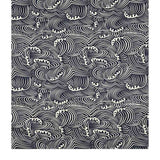
The Japanese wave pattern or Nami, was used as a symbol by the sea gods of the land of the rising sun.
This pattern also appeared on the banners and armors of the Sengoku era (the age of provincial wars).
Troops at war broke like moving waves over their enemies. The pattern represents the force of the waves!
Yama

It is in the sacred Japanese Yama mountains that we find the residences of the Shinto gods.
High places of the Shinto religion, where the mystical world of the spirits merges with reality!
The Japanese Yama pattern represents the fantastic world of the divin!
Seigaiha

Seigaiha means "blue waves of the ocean". This Japanese sign has been used in Egypt, Persia and all over the world.
The term originates from an ancient Japanese court dance. The Seigaiha pattern is a symbol of prosperity, luck and peace.
Japanese people particularly like this pattern for their traditional furoshiki bag.
It is an environmentally friendly packaging to carry groceries, or a bottle of wine.
Kawa

In Japanese art, rivers have a figurative symbolism... In the sense that they are often drawn in an abstract way.
In Asian folklore, they come down from the mountains which are the foundations of life.
In fact, we can imagine that the Japanese Kawa pattern symbolizes the course of life and continuity!
Kumo pattern

The japanese kumo symbol has been revisited in the manga Naruto.
The red clouds are the symbol of the renegade ninjas of Akatsuki. The red clouds are woven on their long black coat!
In ancient times, this pattern was also called Unki during feudal Japan. It looks like the clouds that can be seen near the mountains of kami gods. Today they are called Kumo, which means "cloud".
The meaning of this Japanese pattern corresponds to hope, change and connection with the Japanese gods!
Yukiwa pattern

The Yukiwa japanese symbol represents snowflakes.
For the record, it was designed before the Japanese could admire the perfect real geometry of the snowflakes.
During all the Edo period this emblematic pattern was sewn on the kimono haori jackets.
It was represented with bamboo shoots or inside circles .
Kiri Japan pattern

The Kiri Japanese symbol is also called the tree of princesses.
In the Japanese tradition, it is customary to plant a tree at the birth of a girl.
Then it is cut down and given as a gift when she is old enough to marry.
The Kiri symbol is also associated with the Ho or Japanese Phoenix symbol.These fantastic creatures are also the symbol of the Japanese government.
3. Meaning Japanese patterns animal
 Meaning-Japanese-animal-pattern
Meaning-Japanese-animal-pattern
In Japan, the place of animals in popular culture is undeniable. Beliefs mingle with fantasy. So much so that it is not uncommon during national holidays to see Japanese masks in the effigy of the fox (kitsune mask), or in honor of demons and ghosts (oni mask, tengu mask, komainu mask, dragon mask etc...).
Tsuru

In Japan, the Tsuru pattern is a common symbol representing good fortune and longevity.
The Japanese bird symbol is often depicted with the turtle. There is a Japanese saying: "Tsuru wa sen-nen, Kame wa man-nen". It means in English a crane one thousand years old, a turtle ten thousand years old.
Historically, the symbol of the crane in Japan was used by noble and high-ranking families. Over the years, it has often been combined with other motifs representing good fortune.
Houou

In Japanese legends, the phoenix (houou) appears when the world is prosperous and in harmony.
It a Japanese deity called a Kami...
The phoenix pattern symbolizes elegance and feminine beauty to contemplate on a Japanese kimono!
It s'a also a Japanese longevity symbol !
Ryuu : japanese dragon pattern

Contrasting to Western culture, in Japanese mythology the dragon is benevolent.
This god of the sea and thunder is synonymous with good fortune, strength and power.
The Japanese dragon symbol is particularly appreciated by the bosozuku.
It is a sub-culture of Japanese biker who inspired the manga akira in particular.
Kame
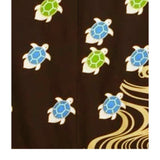
Like the Tsuru symbol, the turtle is synonymous with longevity because it lives for 10,000 years according to legend.
On a Japanese kimono the Japanese tortle pattern also represents good fortune!
It is sometimes represented with a tail made of seaweed.
It is a way to distinguish between a "classic" turtle and a millennium turtle ...
Chidori

The chidori, or plover, is a migratory bird from Japan.
Chidori means one thousand birds in Japanese.
This bird always moves in groups.
They are usually depicted flying over the waves.
The chidori symbol represents strength and perseverance because this Japanese bird is constantly fighting against strong winds and especially likes to brave even the most dangerous waves!
Fukurou

In Japanese history, the owl symbolizes protection and luck.
With the western influence that began in the Meiji era, the Japanese owl symbol represented wisdom and knowledge.
It is very much associated with the Japanese style Kawaii!
Tanuki

Japanese people have a special relationship with the tanuki. In the tales of the land of the rising sun, it is a yokai (Japanese demon) who is benevolent.
Just like the fox demon Kitsune, it has the power to change its shape to deceive humans.
However, if we are kind to him, he will not hesitate to protect us at the risk of his life.
The tanuki symbol brings success and prosperity!
Usagi
The Japanese rabbit pattern has a special symbolism in Japan. It is associated with intelligence. This legend has its origin in the myth of the white rabbit of inaba. In this tale a small white rabbit dares to challenge the terrible sharks of the seas. The challenge is to determine which clan is the most numerous. Thus, the sharks fall into the trap of the little rabbit and line up over the ocean. The white rabbit pretends to count them by jumping on the sharks one after the other. He uses the sharks as a bridge to cross the ocean to Inaba.
Koi

The Japanese carp koi tattoo pattern is widely used in the traditional art Irezumi. In the Japanese legend, this fantastic fish is able to swim up rivers.
It is attributed great virtues related to its power. An Asian legend even tells that if a carp is able to go up a waterfall then this one will be transformed in its turn into Celestial Dragon.
This is why the koi carp motif is also associated with success in life. It is also a symbol of masculinity...
Cho

The butterfly (cho) is a symbol of eternity and reincarnation because of the transformations and mutations it undergoes during its life.
The Japanese butterfly pattern has also been used as an emblem of samurai to signify immortality.
Butterflies are used in Japanese anime to represent the souls of the deceased!
Uroko

Uroko means scales in Japanese. These triangular Japanese patterns look like the scales of a fish, a snake or a dragon.
In Japanese mythology, the skin of the celestial dragons is recognized as impenetrable thanks to their scales.
The Uroko pattern symbolizes protection. It has been widely used on the lining of kimono or obi of Japanese warriors...
Kujaku

The Japanese peacock (kujaku) carries values related to love, kindness because it is associated with a Buddhist deity.
The Kujaku pattern is particularly appreciated on the kimono of a geisha!
They are famous all over the world. They used to wear a traditional Japanese kimono with a obi belt, Japanese sandals called geta...
Tombo
Wearing a Japanese dragonfly (tombo) pattern means that you never give up under any circumstances, it is a sign of courage. Why is it a sign of courage? Because dragonflies always fly forward. Wear a Tombo pattern on your yukata, kimono, or haori jacket if you tend to be convinced by your convictions and never give up!
4. Meaning Japanese geometric patterns
 Picture realised by Kimura team
Picture realised by Kimura team
Each Japanese geometric symbol has a strong symbolism. These symbols are related to Japanese folklore or tradition. Now let's see in this complete guide of Japanese patterns their historical meaning!
Ishidatami

The Ishidatami pattern is the mythical Japanese checkerboard pattern.
It is a very simple design used in different ways over the centuries.
Each new development of the pattern has been dictated by the fashion of the time, usually using the most popular color of the moment!
Hishi

The leaves of this Japanese aquatic plant are diamond-shaped.
It is called the water chestnut.
It has the virtue of promoting productivity, so it is associated with prosperity.
The Hanabashi symbol is a stylistic derivative of the Hishi pattern!
Kagome

The Kagome pattern is inspired by the stitches obtained after weaving a Japanese bamboo basket.
On a samurai or geisha Japanese kimono, the mesh protects from bad luck and repels terrible demons.
The Japanese folklore call them oni! They love to frightened humans...
Tachiwaku (or Tatewaku)

The Tachiwaku pattern is the Japanese model resembling a rising steam.
During the Heian era, making fabric with this pattern required advanced weaving techniques.
It was therefore used exclusively for clothing for Japanese noblemen or at least for high-ranking people...
It symbolizes the elevation of either!
Asanoha

The Asanoha pattern is a Japanese geometric design symbolizing a hemp leaf.
Hemp has long been used as a raw material for Japanese textiles.
This plant has the particularity of growing very quickly and without needing a large amount of water. It is a japanese symbol of growth, good health and vigor.
Asanoha has been widely used for children's clothing, in the hope that it will grow quickly and be strong .
Koushi

In the Edo period, Japanese craftsmen used to make latticework partitions.
The materials were bamboo or wood placed horizontally and vertically to create original patterns.
The Koushi pattern with thicker lines symbolizes power; while the one with thinner lines represents elegance.
This Japanese wooden handicraft still exists and is called kumiko.
Komon

Komon means "fine pattern", and refers to patterns composed of tiny details, appearing from afar as a solid color.
Originally, the Komon pattern was only used for ceremonial clothing.
Nowadays, the komon is mostly used on the komon kimono fabric, and is filled with small or large patterns.
Kikko

The term Kikko translates as tortoise shell. This hexagonal geometric design is native to Western Asia.
The tortoise mofit represents longevity in the land of the rising sun.
A Japanese saying states that a turtle deity is capable of glass for ten thousand years.
This is why the Kikko symbol is said to represent longevity.
Sayagata

The Sayagata pattern is an intertwined and interlaced manji pattern.
They are ancient Buddhist symbols used for thousands of years in many cultures.
It is a derivative of the swastika symbol 卍.
This symbol arrived in Japan around the 1500s and is known to represent life and strength.
5. Japanese floral pattern
 japanese-floral-motifs
japanese-floral-motifs
In Japan we celebrate the beauty of flowers during Hanami, but that's not all. Japanese floral patterns are worn on women's or men's clothes depending on the season, the style, and even the love situation!
Sakura

The cherry blossom (sakura) is one of the emblematic symbols of Japan. If you haven't yet seen a picture of the Japanese archipelago with these trees in bloom, then I invite you to admire this floral beauty...
The Japanese sakura cherry tree pattern marks the beginning of spring (and the school year). This symbol is so widespread and popular in Japanese society that it has its own custom: the hanami.
It is a matsuri festival which consists in contemplating the beauty of the flowers. On a Japanese garment, the sakura pattern symbolizes the kindness, gentleness and ephemeral beauty of all things.
Kiku

The Japanese chrysanthemum represents immortality and longevity. When it was introduced to Japan during the Nara period, the Japanese royal family was immediately fascinated.
Over the years, the Chrysanthemum has become the emblem of the illustrious Japanese imperial family.
Today the Kiku fabric pattern is still the imperial symbol of Japan. This imperial Japanese pattern even appears on the Japanese passport.
Karakusa

The Karakusa pattern is inspired by the stems and creepers of plants that intertwine as they grow into infinity of the world.
It is a Japanese symbol of eternity and sometimes a symbol of prosperity within a Japanese family.
It is associated with a family tree in Western culture.
Susuki

It is the essential decoration during the Japan Moon Festival also called Susuki.
It is appreciated by the Japanese for its elegance and simplicity.
That's why we find the susuki symbol on many Japanese clothes and especially to feast during this lunar festival!
Hagi

This Japanese plant is associated with emotions and autumn.
The Hagi pattern is mentioned in many Japanese poems.
Those kind of traditional japanese poem are called Haiku...
Tachibana

The leaves of this plant resist the cold.
Then when one makes a parallel with its symbolic, one associates the Tachibana pattern, one thinks immediately of the longevity!
Take

Bamboo (Take) is a plant that has the ability to grow very quickly in many natural environments of the Japanese archipelago.
Due to its composition and attributes, the bamboo pattern (on a man's kimono fabric) is associated with prosperity, flexibility and strength.
The Take is used to make the samurai wooden training katana. A samurai is a warrior who follows the moral code of bushido (the way of the warrior).
The leaves are a sign of tranquility, they move with fullness at the mercy of the wind!
Nanten

Although this plant is nicknamed the sacred bamboo, it has nothing comparable with a bamboo.
It has red berries and white flowers.
The Nanten pattern is known to protect Japanese families from negative waves, misfortunes and evil spirits (yokai, Yurei ghost, and oni demon)...
Matsuba

The traditional Japanese Matsuba design depicts long pine needles that have fallen from a tree.
It is a symbol of longevity and perseverance.
Like a tree whose leaves persist and remain green during a harsh winter.
It s perfect Japanese pattern for a traditional kimono or a haori kimono jacket...
Matsu

Pine has a very strong symbolism in Japanese culture. In the Shinto religion, it is said that the deities (kamis) would descend from the sky on pine branches.
To protect shrines and temples from Japanese demons (kitsune, tengu, oni demon) they are surrounded by pine branches. They also repel evil spirits such as Yurei ghosts...
On Japanese fabrics the matsu pattern has longevity because of its resistance and durability. Moreover in the Japanese custom, when we offer a gift wrapped in a furoshiki, we add a pine branch!
Tsubaki

The Tsubaki pattern is very popular. It represents the camellia flower.
This pattern became popular during the Edo period. It has different meanings depending on the color.
Japanese Red flowers symbolize love, and white flowers show desire.
Since camellias begin to bloom in winter, it is a Japanese sign of hope for the coming spring.
Botan

The peony pattern is called Botan the queen of flowers.
It is associated with courage and honor..
In relation to its stem which remains straight and rigid whatever the season : spring, summer, autumn or winter...
It'a a Japanese longevity symbol...
Ume

In Japanese folklore, the Ume pattern symbolizes a protective plant, used to repel oni monsters, evil spirits, and bad luck...
This floral pattern is also associated with beauty, elegance and grace.
All those qualities are sought after by Japanese women!
Kaneshon

On a Japanese fabric the carnation flower is linked to love. But not to love with a capital L.
This is maternal love in its purest form for this Japanese Kaneshon pattern!
It could be a good idea to offer a gift to your mother with a furoshiki Kaneshon symbol...
Shoubu

On can only appreciate the aestheticism of the Shoubu pattern. The iris flower worthy of the greatest Japanese works.
The famous artist Hokusai made a Japanese print (Iris and Grasshoppers) which was then revisited by Van Gogh himself!
As we said previously, he is one of the most famous Japanese artist of the world...
Asagao

The Japanese translation for Asagao is "morning figure".
Because the "ipomea" (asagao) has the peculiarity of opening in the morning and closing in the evening at nightfall...
The ipomee patterns are worn on the splendid geisha kimono or decorate Japanese furniture in a Wabi Sabi style!
Kikyo

Kikyo pattern represents true, unchanging and above all unique and honest love!
It has the particularity of having five petals!
This Japanese and traditional love pattern is also represented on some clothing...
As for instance : Japanese tee-shirt, hoodies and of course traditional yukata, Japanese obi belt etc...
6. Japanese object patterns
 Visual from KimuraKami team
Visual from KimuraKami team
Shima

The Japanese design Shima means "stripe".
It is said that this pattern was often worn by upper class aristocrats.
The chain link pattern is also known as Yoshiwara Shima, in reference to the city it comes from.
Yoshiwara Shima symbolizes the way the city attracts and holds you, like chains. It has also been described as the chains that link a community together.
Sensu

The Japanese fan is the essential accessory for the geisha (geiko).
On a kimono dress, a happi coat or a haori jacket women, the Japanese fan pattern is a sign of prosperity...
During Edo period, the Sensu fan, or Uchiwa fan was a symbol of wealth...
Yabane / Yagasuri

This design is based on the feathers of falcon, eagle and other birds used in arrows.
The Yagasuri Yabane pattern represents arrow throwing which was an important skill in Japan in the Edo period.
This practice continues to be practiced even today in modern and official ceremonies.
Yagasuri is often seen at graduations and weddings. This Japanese motif represents firmness and determination, as an arrow shot straight ahead never returns.
Shippou

Shippou symbol refers to the seven treasures of Buddhism: gold, silver, lapis lazuli, agate, shell, amber and coral.
All these objects are found on the Asian continent and were precious and rare products.
This Buddhist motif also means "partitioned", which refers to a decorative technique using metal bands and precious stones.
Tsuzumi

The tsuzumi pattern is a Japanese drum used in the theater.
On a traditional kimono, it symbolizes celebration, festivity and joy!
We recommend you to wear a traditional Japanese clothing with this symbol, if you wish to celebrate an event like a birthday for instance...
Genjiguruma

This Japanese symbol is associated with the Ferris wheel of change, but it is also the symbol of the imperial car.
In Japanese literature and especially in the work "The Said of Genji", the author plunges us into the life of an imperial prince who cannot claim the throne.
The seal of the main character is the symbol Genjiguruma! It is the first known psychological novel. The prince faces the wheel of destiny!
Hanaguruma

The characteristic of this Asian pattern is to symbolize a cart full of pretty flowers.
Originally it was used by the Japanese shogun and some noblemen to move around the Kyoto province.
Today this traditional pattern is associated with the float full of flowers during a parade or the bride and groom's floats...
Kasa

Japanese umbrellas (kasa) are fashionable accessories for protection from the sun. Tastes and beauty criteria are different in Japanese society.
During the Edo era, the fact that a woman had white skin was rewarding.
Hence the use of the sunshade to protect oneself from the sun (and from the heat of the sun too) because even a Japanese summer kimono keeps you warm if the obi belt is tight!
The umbrella pattern is used for protection and beauty!
Shibori (or kanoko)

Historically shibori is a dyeing technique where the fabric is tied with string to form intricate patterns.
When the string is removed, it reveals detailed images. Shibori dyeing requires a lot of time and skill to be done, it is a quality dye.
The shibori pattern is also called Kanoko Shibori. These are Japanese polka dot patterns. It is a symbol of robustness and therefore long life.
Igeta

The Japanese igeta pattern represents a well.
It is a common ancestral symbol in Kasuri fabrics because of its simplicity.
Since a well is a source of water, it symbolizes life and good fortune. This simple pattern is still a very popular Japanese family symbol.
Temari

The Temari pattern refers to a Japanese decorative ball.
Basically it was a ball or a ball embroidered from a traditional Japanese kimono fabric.
In some cases, this Japanese ball can also be used by children when they want to play games !
It's an Japanese handcraft object...
Noshi

It is a colorful Japanese pattern ribbon attached to gifts offered to celebrate best wishes.
The origin of this practice comes from the Shinto religion and the cult dedicated to Japanese gods and goddesses.
The ancients used to offer abalone to the kami.
Abalone is known for its virtues related to health and therefore longevity.
Kakuregasa

In Japanese folklore, the Takarabune, or "treasure ship", is a celestial vessel on which kamis of good fortune sail.
There are seven lucky kami : Hotei, Fukurokuju, Ebisu, Bishamon, Daikoku, Benzaiten
And this only during the first three days after the new year.
One of these treasures is the hat of invisibility: Kakuregasa.
7. Meaning of Kawaii pattern

The kawaii fashion is historically a Japanese protest movement that originated with young girls in the 80s. Kawaii symbols are associated with everything cute in Japan such as small cats, small dogs, stuffed animals etc...
Hello kitty

This cute Japanese little cat is one of the icons that has helped popularize the kawaii style around the world!
Kawaii symbols are very popular in the new Japanese pop culture. If you want discover Japanese kawaii style. We recommend you to visit Harajukuku (Tokyo).
You can also go to a maid café...
Maneki Neko

This little white cat symbolizes luck and good fortune.
A small statue of cat maneki Neko is placed in front of stores or restaurants to attract customers.
The Maneki Neko pattern of this cute little cat is printed or embroidered on all types of traditional or modern Japanese clothing!
Shiba

This cute little dog is very appreciated because he looks like a little wolf or a little fox.
The kitsune fox is very popular in Japan and in manga.
In the streets of Harajuku in Tokyo, you can see the shiba Japanese dog pattern on hoodies, streetwear t-shirts, japanese pants and also haori jacket!
Pokemon

Pokemon have left their mark on a whole generation.
Pikachu or bulbazaur pattern is especially worn on kawaii accessories such as the mouth mask, also called a masuku.
But it is also printed on everyday products such as mugs, book covers, Japanese mugs and all the forms of goodies object you can find...
The complete guide of Japanese patterns.
We have seen the hidden meaning behind the Japanese patterns. This comprehensive guide, is more than useful to understand the depth and richness of Japanese culture.
Now you have all the knowledge to choose your kimono, your Japanese yukata or your Japanese jacket. We advise you to base yourself on your aesthetic tastes of course but also on the meaning and subtlety you want to give to your traditional Japanese outfit!
Don't hesitate to visit our Japanese online store!




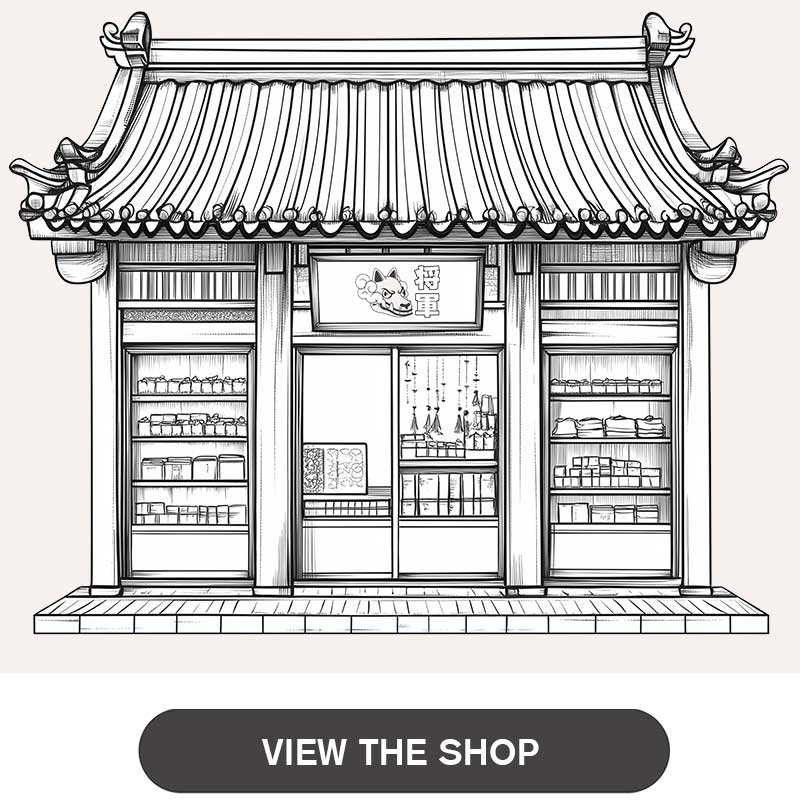
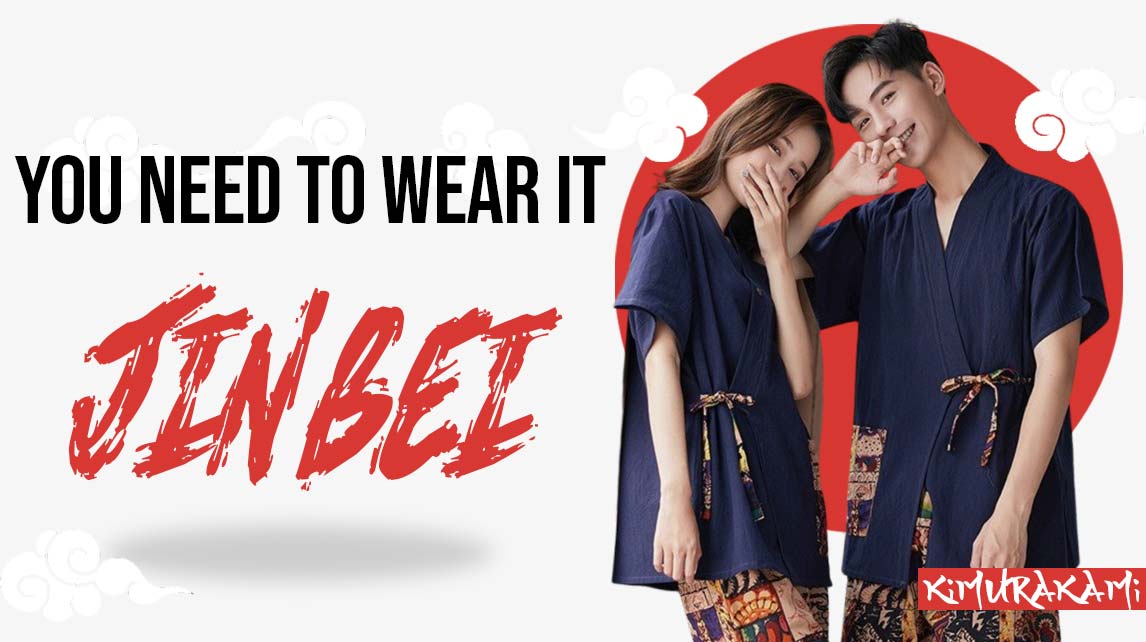
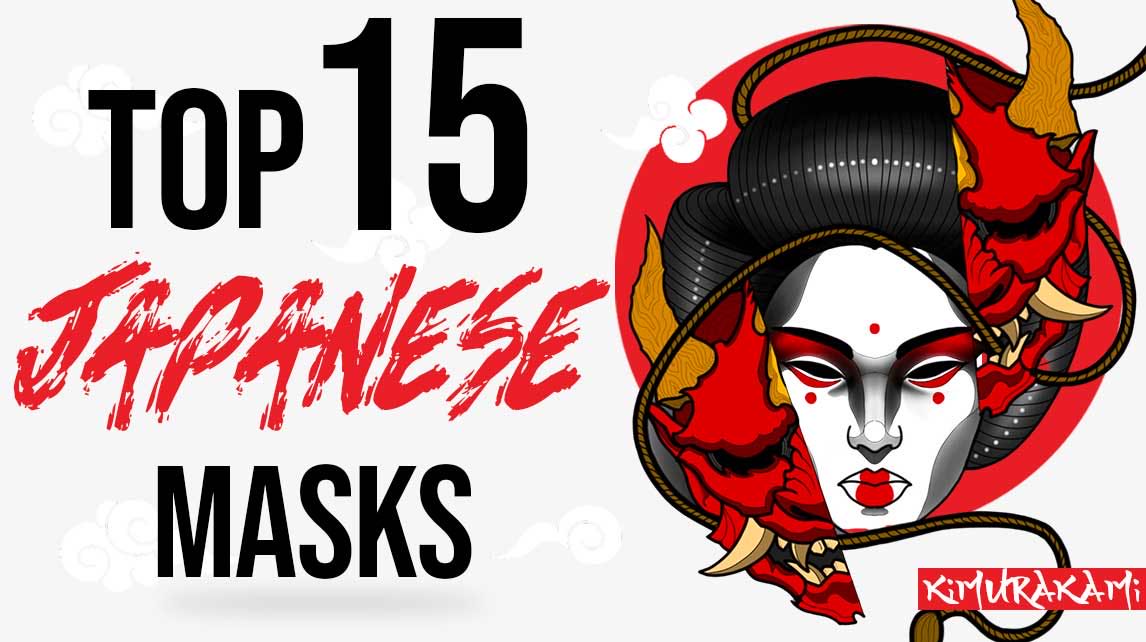
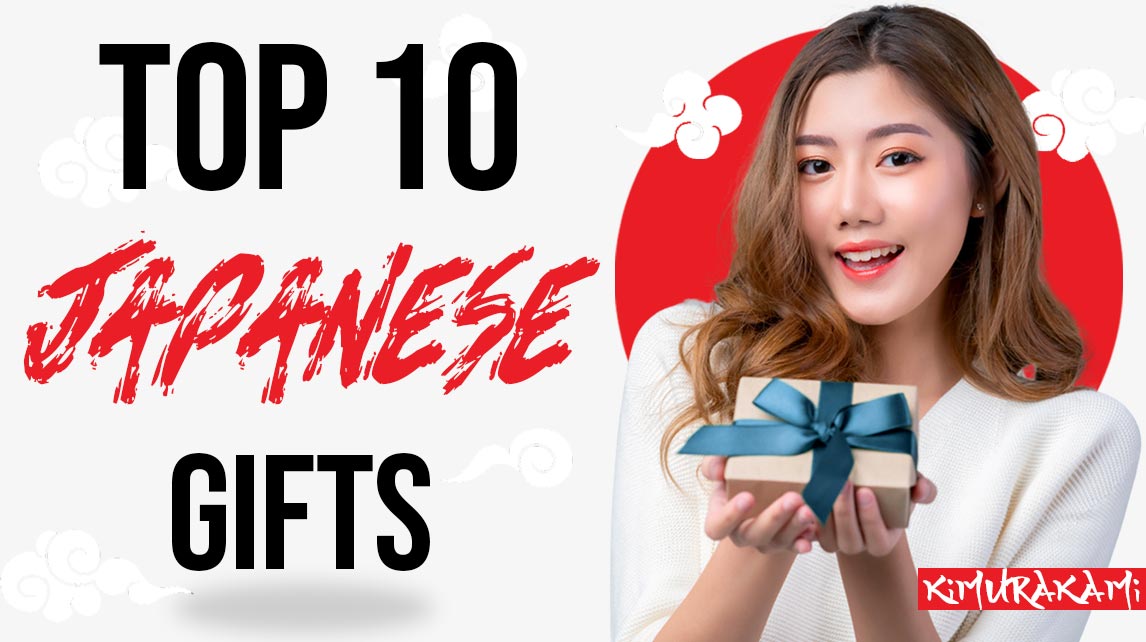
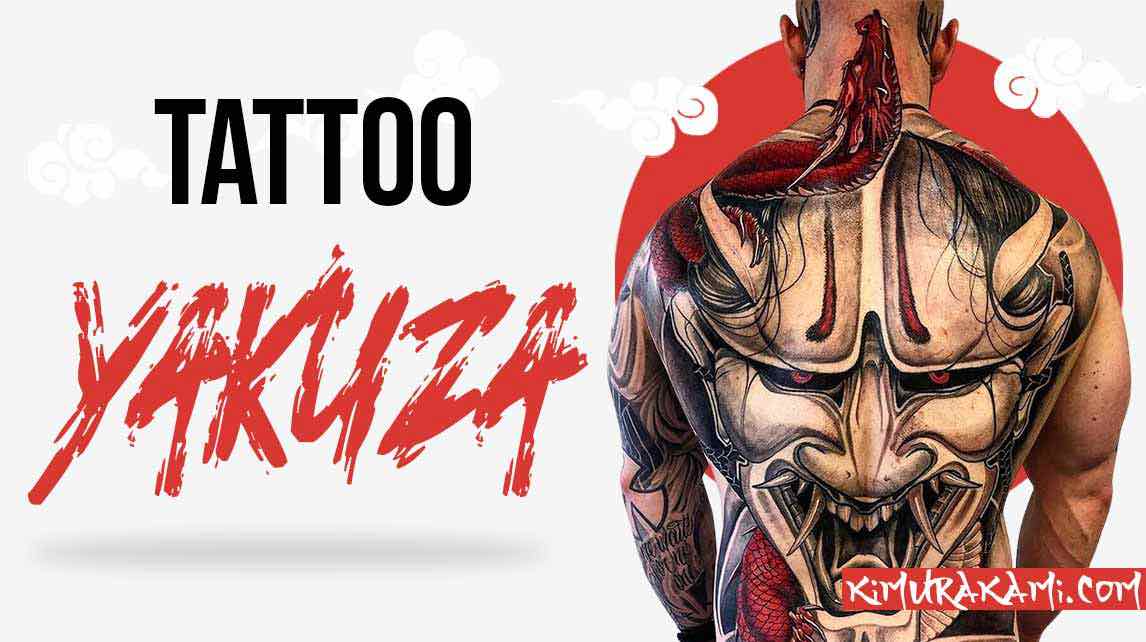
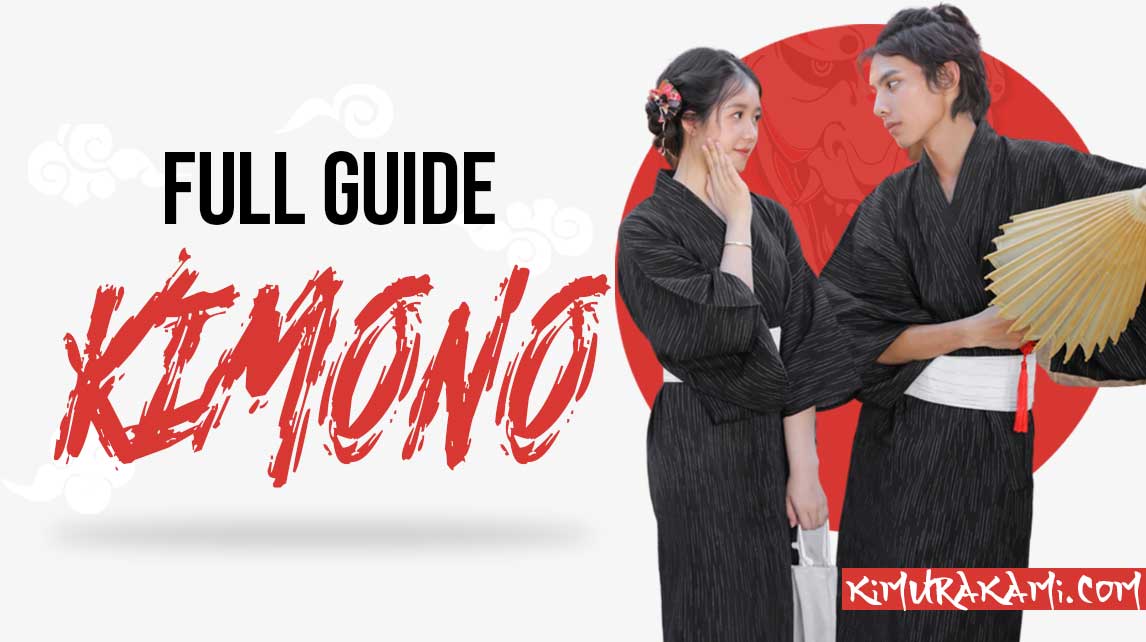
Leave a comment